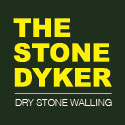Ancient history of Scotland
When the first humans lived in Scotland is unknown. Although man first inhabited north-western Europe 300,000 years ago, it is not until the end of the last Ice Age that we can categorically say there were humans in Scotland.
From around 8000 BC, the ice was retreating, and humans crossed into Scotland on land bridges from mainland Europe, where the North Sea now is. During this period, known as the Mesolithic (8000 BC to 4000 BC), Scotland’s inhabitants were nomads, and small in number. The earliest evidence of humans was found at Cramond near Edinburgh, with hazelnut fragments being dated to around 8500 BC.
Around 6000 BC the land bridge to Europe disappeared into the sea, and Britain was an island. The Mesolithic period gave way to the Neolithic (4000 BC to 2500 BC), and people began to abandon their nomadic hunter gatherer lifestyle to settle down and farm the land. Although evidence of this change exists in the form of Neolithic tools, more obvious are the monuments people began building during the Neolithic period.
Barrows, cairns and chambered cairns were constructed to house the dead, and communities constructed monuments such as henges, cursus monuments, stone circles and standing stones, the purpose of which is still being debated. Little immediately visible remains of the settlements that these people lived in, presumably because their buildings were made of wood and have rotted away in the soil. However, in Orkney where there were few trees, the people built in stone.
Skara Brae is a Neolithic village complex in Orkney that was uncovered after a storm in 1850 destroyed the sand dunes that had protected it for centuries. It was occupied between 3100 and 2500 BC, making it older than the pyramids in Egypt.
As the Neolithic became the Bronze Age (2500 BC to 700 BC), a previously unseen type of pottery began to appear in Scotland, suggesting either a cultural change in the existing population or perhaps immigrants from Europe bringing with them new ideas and practices. Whichever is the case, these Beaker people (so called because of their pottery vessels) seem to have been the first metalworkers in Scotland, working in bronze from around 2000 BC, and later in gold.
Since bronze working required raw materials that weren’t plentiful in every area, trade routes were established and people who may previously have been isolated from other communities began to interact. Bronze is made from copper and tin, and the only place in Britain where tin is found is Cornwall. Trade also carried on further afield to mainland Europe, with people probably travelling in skin-covered boats such as curraghs. This increased contact with Europe probably led to the introduction of a Celtic language to Scotland.
By the time the Bronze Age ended and the Iron Age (700 BC to 500 AD) began, Britain was Celtic, and starting to divide along tribal lines. Although there is no clear evidence for it in Scotland, continental Celtic tribes moved en masse into England, so the same may well have happened further north. These tribes brought with them iron-working skills and the use of horses for transport and warfare. This increase in population, and its tribal nature, led to inevitable conflict, and the Iron Age saw the building of defensive structures such as forts, duns, brochs, souterrains and crannogs.
During the first century AD, the Romans made the first of three unsuccessful invasions of Scotland, and their presence has the effect of uniting many of the tribes into a confederation to defend their land, eventually leading to Pictish Scotland emerging from ancient Scotland.
